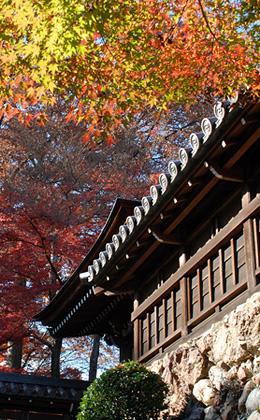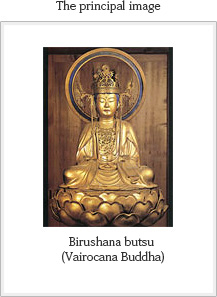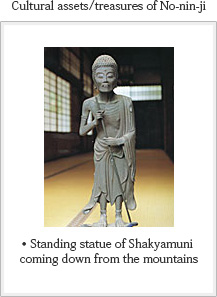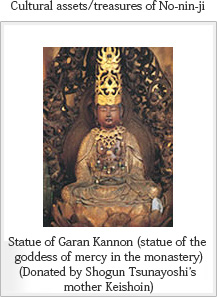
TOP PAGE > A brief history of No-nin-ji

・It is said that the origin of the temple traces back to the first year of the Bunki era (1501) in the middle of the Muromachi period when the feudal warlord, Iekatsu Nakayama of Hanno, invited a well-reputed monk, Montatsu Fuoku, to build a small hut that later became a temple for the son of Iekatsu Ienori to mourn the death of his father.
・Terumori, the son of Ienori, entered the service of Ieyasu Tokugawa, and with Tokugawa's support, the temple developed into a thriving place with many unsui (trainee monks).
・Approximately 100 years after the death of Ienori Nakayama, Naokuni Kuroda rebuilt the dilapidated temple. In the second year of the Hoei era, with the backing of the shogunate, Naokuni, who served as the chief advisor to Tsunayoshi Tokugawa from the domain of Tatebayashi, along with the 13th chief priest, Hiromoto Taishu, built and renovated the temple gate, main hall, and living quarters, completing the monastery.
・The name plate of No-nin-ji, Buyou-zan, was inscribed by Ippon Kouben Shinno, then the head priest of the Tendai Buddhist denomination, in the 10th year of the Genroku era (1697) by order of the shogunate.
・During the Hanno War, which took place in Hanno around the time of the Meiji Restoration, Seiichiro Shibusawa, the leader of Shougi-tai (a military troop of shogunate vassals), formed Shinbu-gun due to an internal dispute and used the temple as a military base. In the fourth year of the Keio era (1868), Shinbu-gun was decisively defeated by government forces with the temple and surrounding homes burnt to the ground. The main hall of the temple was rebuilt in the 11th year of the Showa era. The remainder of the reconstruction of the temple began in the 51st year of the Showa era and now the temple gate, the spirit tablet hall, stateroom, bell tower, and living quarters have been completed.

![能仁寺 - [埼玉県飯能市・曹洞宗 武陽山能仁寺]](images/header.gif)



